Exploring Tashkurgan Stone City: Unearth the Secrets of a Historic Silk Road Stop
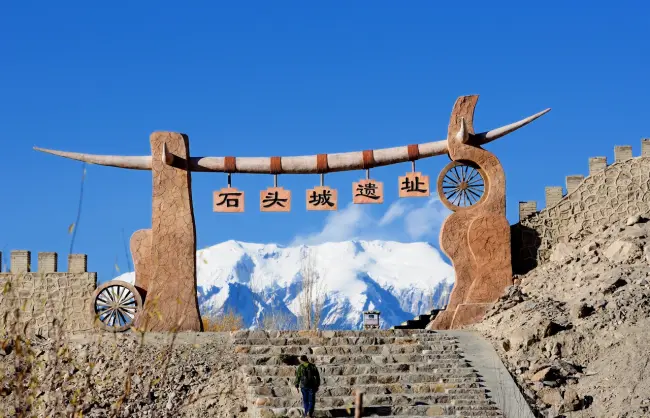
An Essential Guide to Visiting Tashkurgan Stone City
Nestled in the breathtaking heights of Xinjiang’s Tashkurgan Tajik Autonomous County lies a remnant of ancient glory: Tashkurgan Stone City. As you stand before the weathered stone walls of this historical fortress, you can almost hear the whispers of traders and travelers who once traversed the legendary Silk Road. With an altitude of 3,700 meters, this impressive site is not only one of the highest towns in the world but also a testament to the architectural ingenuity of its time.
Dating back to the Jin Dynasty, the Stone City offers a fascinating glimpse into a bygone era when it served as a crucial military stronghold and a vibrant hub for cultural exchange. Here, amidst the crumbling towers and ancient ruins, history enthusiasts and curious travelers alike will find themselves captivated by the stories embedded in the very stones. Surrounded by stunning natural landscapes—snow-capped mountains, verdant grasslands, and crystal-clear rivers—the location enhances the allure of this timeworn site, making it a must-visit for those seeking both adventure and insight into China’s rich tapestry of history.
Prepare to embark on a journey through time as you explore the remnants of this once-thriving city. Whether you’re drawn by archaeological wonders, the breathtaking scenery, or the vibrant culture of the local Tajik people, Tashkurgan Stone City promises an unforgettable experience that will leave you yearning for more tales of the Silk Road.
In This Guide
- An Essential Guide to Visiting Tashkurgan Stone City
- The Rich History and Legends of Tashkurgan Stone City
- Main Highlights: What You Absolutely Can’t Miss
- Planning Your Visit: A Practical Guide
- Tickets: Prices, Booking, and Tips
- How to Get There: A Complete Transportation Guide
- Local Cuisine and Accommodation Nearby
- Frequently Asked Questions
- Final Thoughts on Your Trip
The Rich History and Legends of Tashkurgan Stone City
Nestled in the majestic landscape of Xinjiang, Tashkurgan Stone City, or “Tashkurgan” meaning “stone city” in Uyghur, serves as a testament to the rich tapestry of history and legends that have unfolded along the ancient Silk Road. This remarkable site, perched at an altitude of approximately 3,700 meters, is one of the highest towns in the world and offers a glimpse into a past that is as captivating as the scenery that surrounds it.
The origins of Tashkurgan Stone City trace back to the Jin Dynasty, around the 12th century, when it began as a strategic military outpost. It was positioned at a crucial juncture along the Silk Road, which connected the East to the West, allowing for cultural and commercial exchanges that shaped civilizations. Archaeological findings suggest that the site may have served as the capital of the ancient Heptanese Kingdom during the Tang Dynasty, further solidifying its significance in the region’s history.
The city features remnants of impressive fortifications, with walls that once soared over 20 meters high. These structures were built to withstand invasions and to control the movement of caravans traversing the Silk Road. Over the centuries, Tashkurgan evolved from a mere military fortress during the Tang Dynasty to a bustling hub of trade and culture. By the time the Yuan Dynasty arrived, the city had expanded significantly, enhancing its defensive capabilities to adapt to the shifting geopolitical landscape.
During the Qing Dynasty, Tashkurgan Stone City was repaired and revitalized, serving as a center for frontier governance. This period saw the establishment of government offices and residences, which contributed to the city’s complexity and importance. However, by the late 20th century, the city fell into decline, and many of its structures were left in ruins. In 2001, in recognition of its historical significance, Tashkurgan Stone City was designated as a key national heritage conservation unit, ensuring that its legacy would be preserved for future generations.
Legends abound in Tashkurgan, adding to the mystique of this ancient site. Tales of brave soldiers defending the city against invaders and stories of merchants who traveled great distances to trade their goods are woven into the fabric of its history. Local folklore often speaks of the spirits of those who once inhabited the Stone City, believed to protect the land and its people even today.
Visitors to Tashkurgan Stone City can explore the remnants of its grandeur, traversing the ruins of the royal palace, government offices, and temples that once stood proudly within its walls. The contrast between the desolate ruins and the breathtaking natural beauty surrounding them creates a poignant atmosphere, inviting travelers to engage with the echoes of history that resonate through the stones.
In summary, Tashkurgan Stone City is more than just a collection of ancient ruins; it is a vibrant historical narrative that reflects the passage of time, the resilience of cultures, and the enduring spirit of those who have called this remarkable place home. Whether you are a history enthusiast or simply a curious traveler, a visit to Tashkurgan offers a chance to step back in time and appreciate the legends that have shaped this extraordinary landmark.
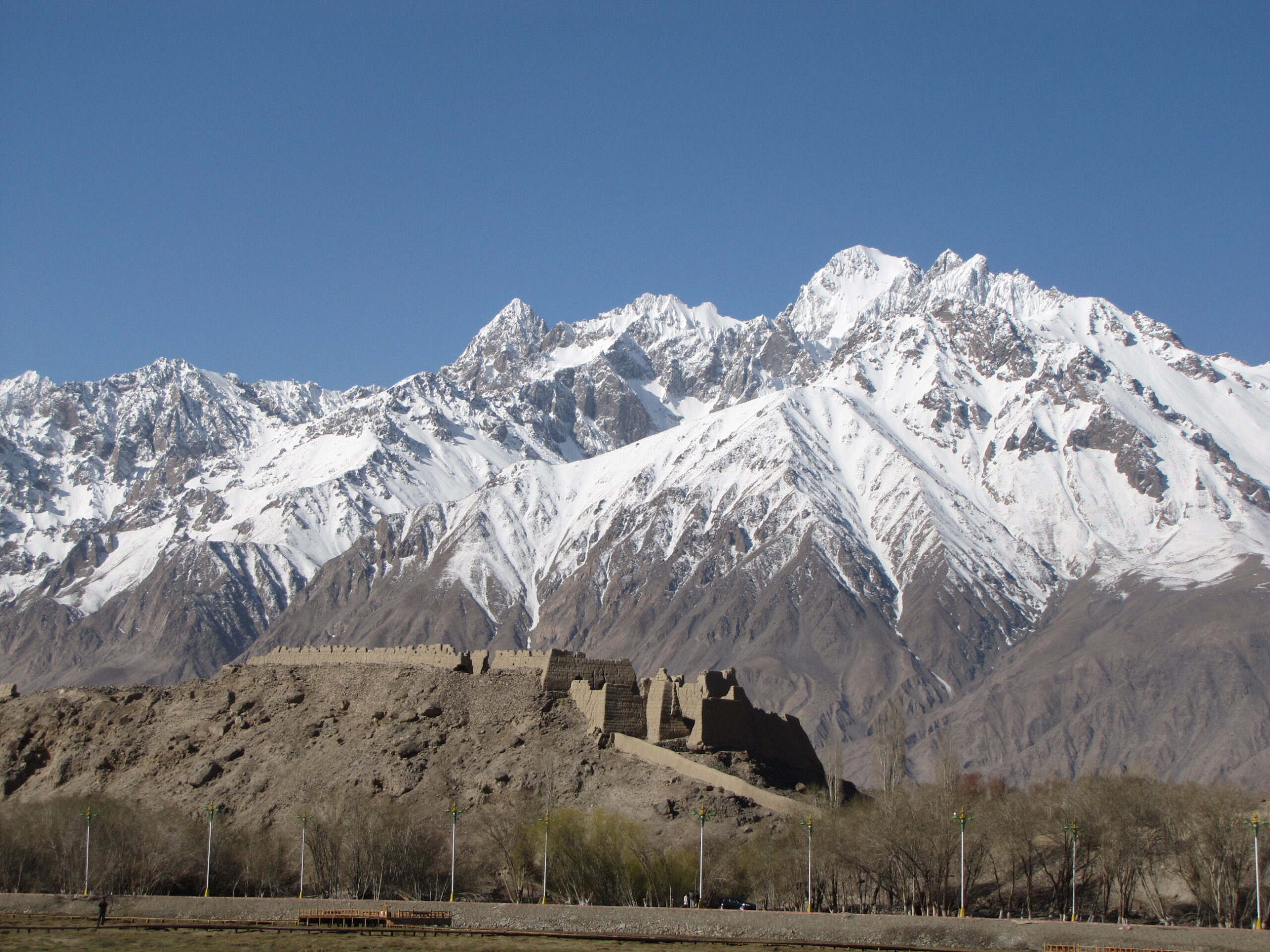
Tashkurgan Stone City.
Main Highlights: What You Absolutely Can’t Miss
Tucked away in the breathtaking landscapes of Xinjiang, Tashkurgan Stone City is a treasure trove of history and natural beauty that beckons travelers from around the globe. Here are the main highlights that you absolutely cannot miss during your visit to this remarkable site.
The Ancient Ruins
At the heart of Tashkurgan lies the impressive ruins of the Stone City itself. Dating back to the Jin Dynasty, these remnants tell a story of a once-thriving fortress that played a crucial role along the ancient Silk Road. As you wander through the ruins, take note of the formidable stone walls, towering gates, and remnants of watchtowers that still stand tall despite the passage of time. The inner city, which houses the royal palace and government offices, showcases better-preserved structures, offering a glimpse into the architectural prowess of ancient civilizations. Don’t miss the temple ruins on the eastern side, where faded murals and a Buddha image whisper tales of the past.
Spectacular Natural Scenery
Elevated at an astonishing 3,700 meters, Tashkurgan Stone City is surrounded by majestic snow-capped mountains and verdant grasslands. The panoramic views from the ruins are nothing short of breathtaking, with the rugged landscape contrasting beautifully against the desolation of the historical site. For the best experience, time your visit for autumn, when the grasslands transform into a golden hue, creating a stunning backdrop for photography. As the sun sets, watch as the fading light bathes the ruins in a warm glow, providing a perfect opportunity for unforgettable photos.
The Tajik Folk Village
Just a stone’s throw away from the Stone City lies a traditional Tajik folk village. Here, you can immerse yourself in the rich culture and lifestyle of the Tajik people. The villagers are known for their warm hospitality, often inviting visitors into their homes to share local delicacies and traditional folk performances. Engaging with the locals offers a deeper understanding of the vibrant culture that has thrived in this region for centuries.
The Historic Outer City
While much of the outer city has succumbed to the ravages of time, remnants of its former glory still linger. Explore the traces of residential areas, artillery platforms, and horse face structures that hint at the city’s strategic military importance. The outer city’s remaining walls tell a tale of resilience and defense, making it a fascinating area to delve into the history of Tashkurgan.
Accessibility and Visitor Experience
Getting to Tashkurgan Stone City is an adventure in itself. Most travelers find their way from Kashgar via local buses or taxis, with several departures throughout the day. Upon arrival, allocate 2-3 hours to fully appreciate the ruins and the surrounding beauty. Keep in mind that Tashkurgan’s high altitude means temperatures can fluctuate dramatically, so dress in layers and be prepared for cooler weather.
Final Thoughts
Tashkurgan Stone City is more than just a historical site; it’s a journey through time that offers a unique blend of cultural heritage and stunning natural beauty. Whether you are a history enthusiast, a photography lover, or simply seeking a serene escape into nature, this destination promises an unforgettable experience that will linger in your memories long after you leave. Don’t miss the chance to explore this enchanting stone fortress, where every crumbling wall holds a story waiting to be uncovered.
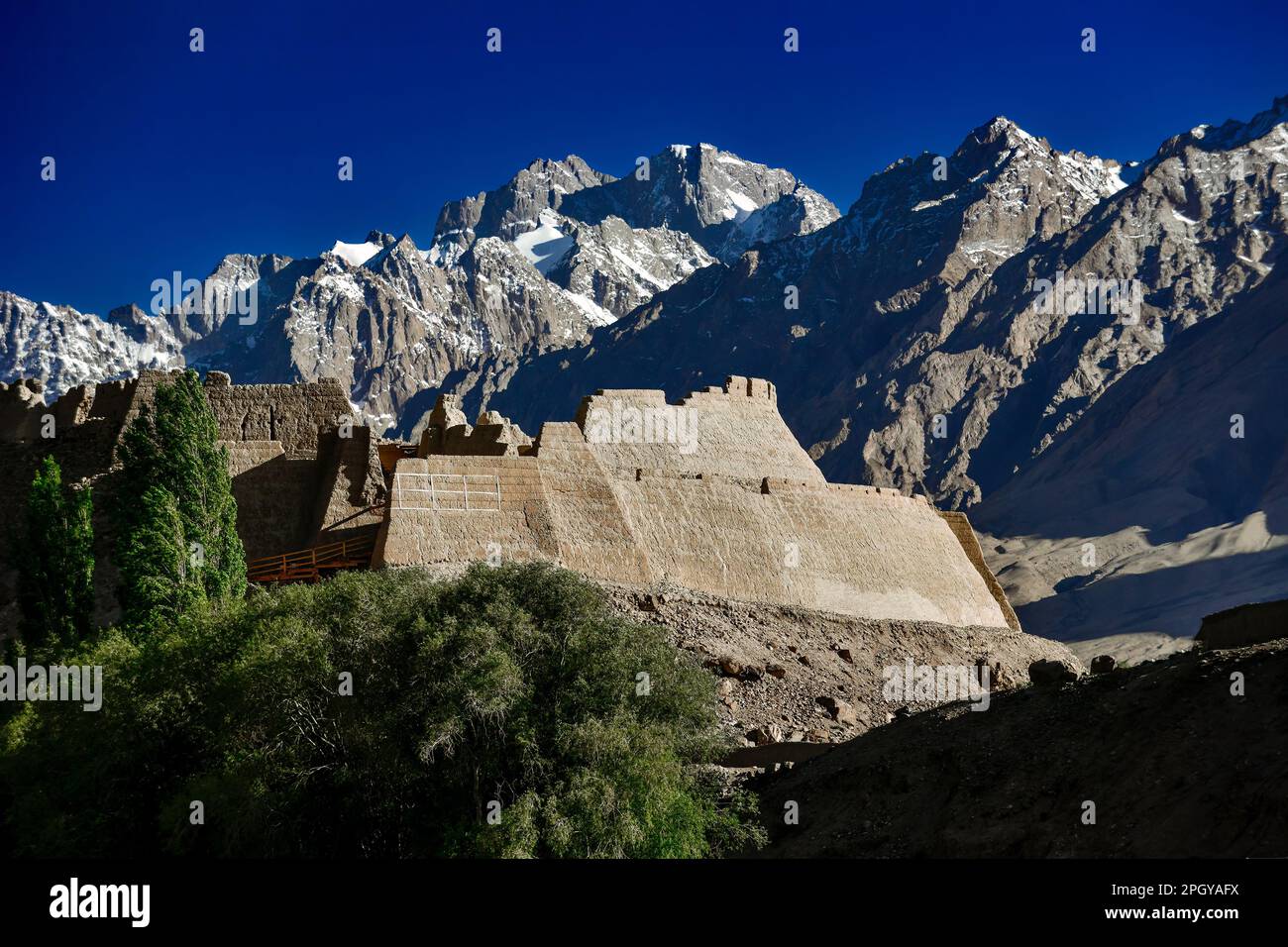
Tashkurgan Stone City.
Planning Your Visit: A Practical Guide
Planning Your Visit: A Practical Guide to Tashkurgan Stone City
Embarking on a journey to Tashkurgan Stone City is like stepping back through time to explore a vital piece of Silk Road history. Nestled high in the mountains of Xinjiang, this ancient fortress is an architectural marvel surrounded by breathtaking natural beauty. Here’s everything you need to know to make the most of your visit to this remarkable destination.
Fast Facts
- Location: Tashkurgan Town, Tajik Autonomous County, Xinjiang, China
- Opening Hours: 10:00 AM – 7:00 PM
- Ticket Price: CNY 30 per person
- Size: Approximately 1,285 meters in circumference, covering an area of about 100,000 square meters
- Time Needed: Plan to spend around 2-3 hours exploring the site
Best Time to Visit
The ideal months to visit Tashkurgan Stone City are from June to October. During this period, the climate is dry, and temperatures are comfortable for outdoor exploration. If you can, visit in August or September to enjoy the local fruit harvest, which is a delightful treat. For photography enthusiasts, the golden hues of sunset provide the perfect backdrop for capturing the beauty of the ruins.
Getting There
Tashkurgan is not serviced by an airport or train station, making Kashgar your gateway to this ancient site. Here’s how to reach Tashkurgan:
- By Bus: Take a taxi or shuttle bus from Kashgar Bus Station or Kashgar International Railway Station. Buses typically depart 2-3 times daily, with the 9:00 AM bus being the most recommended.
- By Car: For a more comfortable journey, consider hiring a private car or joining a tour.
- Distance: Tashkurgan is approximately 291 kilometers from Kashgar.
What to Do
Explore the Ruins
The Stone City itself is a captivating labyrinth of ancient walls, towers, and ruins. Here’s what to look out for:
-
Outer City: Delve into the remains of residential areas, where traces of old city walls and watchtowers can still be seen. The remnants of a temple with murals and a Buddha image can also be found here.
-
Inner City: This area is better preserved, showcasing structures like the royal palace and government offices, albeit in a state of ruin. The intact battlements and parapets provide a glimpse into the city’s historical significance.
Enjoy the Scenery
Positioned on a hill, Tashkurgan Stone City offers stunning views of the surrounding landscape. From the fortress, take in the sight of snow-capped peaks, lush grasslands, and grazing livestock. Autumn provides an especially picturesque view with golden grasslands.
Visit the Tajik Folk Village
Adjacent to the Stone City, the Tajik Folk Village presents an opportunity to immerse yourself in local culture. Experience the traditional lifestyle of the Tajik people, enjoy folk performances, and savor local delicacies.
Travel Tips
-
Climate Preparation: Given the high altitude (around 3,100 meters), temperatures can drop significantly in the evening. Pack a warm coat, even in the summer months.
-
Local Etiquette: The Tajik people are known for their hospitality. If invited to their homes, it’s customary to offer a small token of appreciation (CNY 20-30 is appropriate).
-
Health Precautions: Due to the altitude, bring medications for altitude sickness, and stay hydrated. Avoid strenuous activities upon arrival and limit alcohol consumption.
Nearby Attractions
Enhance your visit with these nearby highlights:
-
Karakoram Highway: Renowned as one of the world’s most scenic roads, offering stunning mountain views.
-
Karakul Lake: A pristine alpine lake located about 200 km from Tashkurgan, perfect for a day trip.
-
Muztagh Ata: This majestic mountain, situated around 60 km from Tashkurgan, is a must-see for nature lovers.
In Summary
Tashkurgan Stone City is more than just a historical site; it’s a gateway to exploring the rich cultural tapestry of the region. By planning your visit thoughtfully, you can immerse yourself in the breathtaking beauty and compelling history that this remarkable destination has to offer. Whether you are a history enthusiast, a nature lover, or simply seeking adventure, Tashkurgan promises an unforgettable experience.
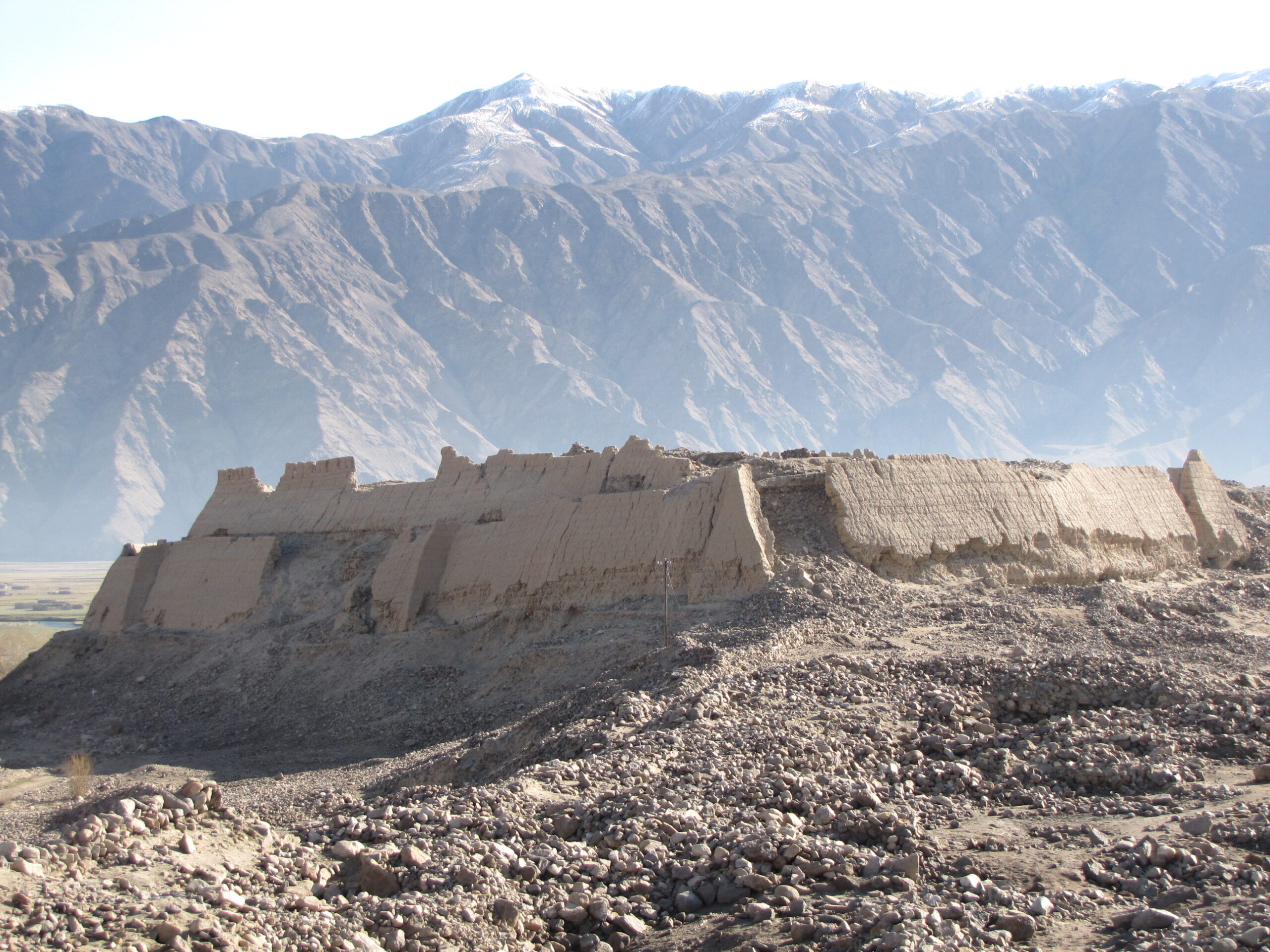
Tashkurgan Stone City.
Tickets: Prices, Booking, and Tips
Visiting Tashkurgan Stone City is a journey back in time, and planning your trip involves a few essential details regarding tickets, prices, and booking tips to ensure a smooth experience.
Ticket Information
- Price: Entrance to Tashkurgan Stone City is quite affordable, with tickets priced at CNY 30 (approximately $4.50 USD) per person.
- Opening Hours: The site is open daily from 10:00 AM to 7:00 PM, allowing ample time for exploration within the day.
Booking Tips
-
Purchase at the Entrance: Tickets can be conveniently purchased on-site at the entrance of the Stone City. There’s no need for advance booking, making it easy for spontaneous travelers.
-
Cash is King: It’s advisable to carry cash in Chinese Yuan (CNY) for your ticket purchase, as card payments may not be accepted at the ticket booth.
-
Plan for Peak Times: If you’re visiting during peak tourist seasons, particularly from June to October, consider arriving early in the day to avoid larger crowds and enjoy a more tranquil experience.
-
Stay Hydrated and Prepared: Given the altitude of the site (approximately 3,100 meters), it’s wise to carry water and some snacks. Additionally, a light jacket is recommended, as temperatures can drop significantly in the evening.
-
Explore Nearby Attractions: While planning your visit, consider setting aside time to explore nearby sites such as the breathtaking Karakul Lake and the majestic Muztagh Ata mountain, which can enhance your journey through this stunning region.
By keeping these tips in mind, you can fully immerse yourself in the rich history and natural beauty of Tashkurgan Stone City without the stress of logistical hurdles. Enjoy your adventure!
How to Get There: A Complete Transportation Guide
Tashkurgan, often referred to as the “Stone City,” is a fascinating destination located in the Tashkurgan Tajik Autonomous County of Xinjiang, China. Known for its historical significance along the ancient Silk Road, this picturesque site is accessible through a variety of transportation options. Here’s a comprehensive guide to help you navigate your way to Tashkurgan Stone City.
Getting to Tashkurgan
By Air
While Tashkurgan does not have its own airport, the nearest major airport is Kashgar Airport (KHG), located approximately 291 kilometers away. Kashgar Airport connects with several major cities in China, including Urumqi, Beijing, and Shanghai. From the airport, you can take a taxi or shuttle to reach the Kashgar city center.
By Train
Kashgar also serves as the main railway hub for the region. The Kashgar Railway Station is well-connected to other cities in Xinjiang and beyond. Upon arrival in Kashgar, you will need to transfer to a bus or taxi to continue your journey to Tashkurgan.
By Bus
The most common way to reach Tashkurgan from Kashgar is by bus. Here’s how to do it:
– Kashgar Bus Station: Head to the Kashgar Bus Station, where you can find shuttle buses that operate daily.
– Departure Times: Buses typically depart 2-3 times a day, with the 9:00 AM bus being a popular choice among travelers.
– Travel Duration: The bus ride takes approximately 5-7 hours, depending on traffic and road conditions.
Alternatively, you may also find taxis or rideshare services available at the bus station for a more private and comfortable journey.
By Private Car
For those seeking more flexibility, consider renting a car or hiring a driver from Kashgar. This option allows you to explore the scenic Karakoram Highway at your own pace, stopping at picturesque locations along the way.
Special Considerations
- Altitude Awareness: Tashkurgan is situated at a high altitude (approximately 3,100 meters). It’s advisable to take necessary precautions to prevent altitude sickness. Bring along common medications and ensure you stay hydrated during your travels.
- Border Zone Permit: Since Tashkurgan is located near the border, all visitors are required to obtain a frontier pass. This can be arranged at Chinese embassies or consulates prior to your trip or at local public security bureaus in Xinjiang, such as those in Kashgar and Urumqi.
Local Transportation in Tashkurgan
Once you arrive in Tashkurgan, local transportation options are limited, so it’s best to explore on foot. The Stone City is within walking distance from the town center. However, if you prefer not to walk, local taxis may be available.
Conclusion
Embarking on a journey to Tashkurgan Stone City promises a memorable experience steeped in history and natural beauty. Whether you choose to travel by bus, taxi, or private car, the enchanting ruins await you at the end of your adventure. Make sure to plan your trip in advance and enjoy the stunning landscapes along the way!
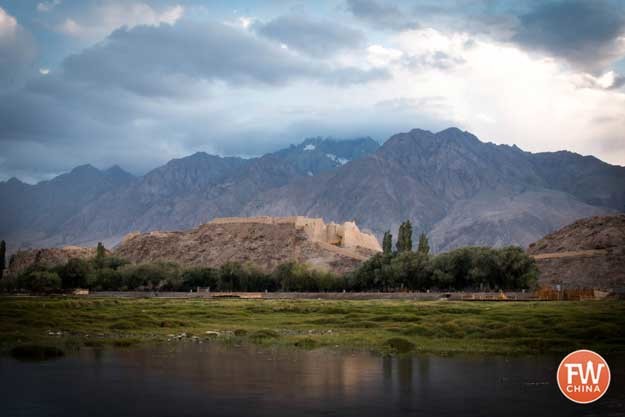
Tashkurgan Stone City.
Local Cuisine and Accommodation Nearby
When exploring the historical wonders of Tashkurgan Stone City, indulging in local cuisine and finding comfortable accommodation can enhance your travel experience. Here’s a guide to savoring the flavors of this unique region and resting well after a day of adventure.
Culinary Delights
In Tashkurgan, the local cuisine reflects the rich cultural tapestry of the Tajik people, with influences from Uyghur, Han, and Kyrgyz cooking. Be sure to try these local dishes:
-
Oshi Palov: This traditional Tajik rice dish is a must-try. Cooked with spices, carrots, and pieces of lamb or chicken, it’s often served during special occasions but can be found in many local eateries.
-
Samosas: These deep-fried pastries filled with meat or vegetables are perfect for a snack on the go. Crispy on the outside and savory on the inside, they are a favorite among locals and travelers alike.
-
Lagman: A hearty noodle dish that showcases the blend of cultures in the region, lagman is made with hand-pulled noodles and a rich sauce of meat and vegetables, topped with aromatic spices.
-
Tajik Tea: Don’t miss out on experiencing local tea, often served with sugar and a splash of milk. Sip this comforting beverage while enjoying the tranquil scenery around you.
For a more immersive experience, consider visiting a Tajik folk village nearby. Here, you can not only taste authentic home-cooked meals but also engage with local families who are eager to share their culinary traditions.
Where to Rest
After a day of exploration, retreat to one of the comfortable accommodations nearby:
-
Tashkurgan Hotel: This hotel offers cozy rooms with modern amenities and stunning views of the surrounding mountains. It’s an ideal base for exploring the Stone City, providing a blend of comfort and local charm.
-
Karakol Guesthouse: Known for its hospitable atmosphere, this guesthouse gives visitors a taste of traditional Tajik hospitality. The owners are often happy to share stories and insights about the local culture while offering delicious homemade meals.
-
Homestays: For a more authentic experience, consider staying with a local family. Many Tajik households open their doors to travelers, providing a unique opportunity to immerse yourself in daily life and enjoy local cuisine prepared with love.
-
Camping Options: If you’re feeling adventurous, consider setting up camp in the scenic areas surrounding Stone City or along the Karakoram Highway. This option allows you to connect more closely with nature, under the vast starlit sky.
Embrace the flavors and hospitality of Tashkurgan to create unforgettable memories during your visit to this remarkable destination. Whether you opt for a local restaurant or a charming guesthouse, the warmth of the Tajik people and their cuisine will surely add depth to your travel experience.

Tashkurgan Stone City.
Frequently Asked Questions
Here are some frequently asked questions for travelers planning a visit to Tashkurgan Stone City:
1. What is the best time of year to visit Tashkurgan Stone City?
The best time to visit is from June to October when the weather is pleasant and dry. August and September are particularly special as they coincide with the local fruit harvest, offering a chance to enjoy fresh produce.
2. How do I get to Tashkurgan from Kashgar?
To reach Tashkurgan, you can take a taxi or a shuttle bus from Kashgar. Buses typically depart from Kashgar Bus Station or Kashgar International Railway Station, with a recommended morning departure around 9:00 a.m. The journey covers approximately 291 kilometers.
3. Is there an entrance fee to visit the Stone City?
Yes, there is a ticket price of CNY 30 per person to enter Tashkurgan Stone City. It’s advisable to have some cash on hand, as card payments may not be accepted.
4. What should I wear when visiting Tashkurgan Stone City?
Given the high altitude and significant temperature fluctuations, it’s wise to dress in layers. Bring a warm coat even in summer months, as temperatures can drop significantly in the evenings. Sun protection is also essential due to strong UV rays.
5. Do I need a special permit to visit Tashkurgan and the Stone City?
Yes, a frontier pass is required for all tourists visiting Tashkurgan, as it is close to the border. You can apply for this permit when you obtain your visa at Chinese embassies or consulates. The necessary materials include your passport, Chinese visa, and travel itinerary.
6. How much time should I allocate for my visit to the Stone City?
Plan to spend about 2-3 hours exploring the ruins and enjoying the stunning views. This should give you ample time to appreciate the historical significance and take photographs, especially during sunset.
7. What activities are available nearby?
In addition to exploring the Stone City, visitors can enjoy the breathtaking views of the surrounding mountains, visit the nearby Tajik Folk Village to learn about local culture, or take a scenic drive along the Karakoram Highway.
8. What precautions should I take regarding altitude sickness?
Tashkurgan Stone City is located at an altitude of approximately 3,100 meters. To minimize the risk of altitude sickness, bring common medications, stay hydrated, and avoid strenuous activities upon arrival. It’s also advisable to limit alcohol consumption until you acclimatize.
Final Thoughts on Your Trip
As you prepare to bid farewell to Tashkurgan Stone City, take a moment to reflect on the journey you’ve undertaken—not just through the rugged landscapes of Xinjiang, but through the echoes of history that resonate within these ancient walls. This remarkable site, steeped in tales of the Silk Road and nestled among majestic mountains, offers a unique glimpse into a time when cultures converged and empires flourished.
The breathtaking views surrounding the stone fortifications, the remnants of a vibrant past, and the warmth of the local Tajik community all weave together to create an unforgettable experience. Whether you marveled at the intricacies of the ruins, savored the local delicacies, or simply soaked in the serene beauty of the grasslands, each moment spent here contributes to a tapestry of memories that will linger long after your departure.
As you leave Tashkurgan, carry with you not only the stories of this timeless fortress but also an appreciation for the rich cultural heritage that thrives in this remote corner of the world. Let the spirit of adventure continue to guide you, urging you to explore further and discover the hidden gems that await on your travels. Safe journeys, and may the road ahead be filled with wonder and discovery!